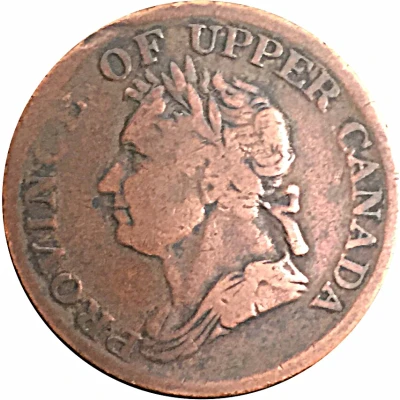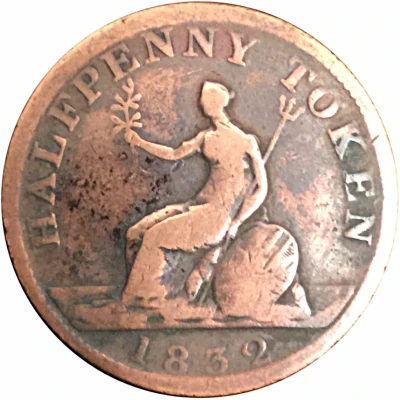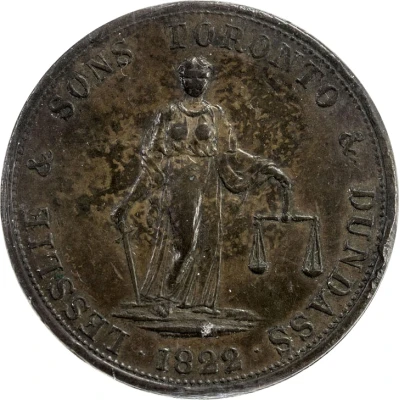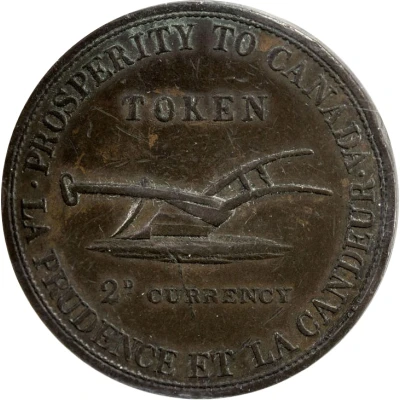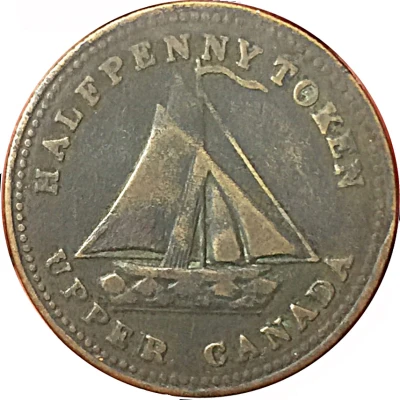
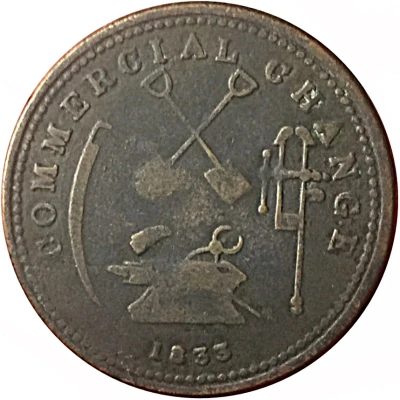

© Mark240590
½ Penny Sloop Token - Commercial Change - Tools
1833 year| Copper | 5.4 g | 27.7 mm |
| Issuer | Upper Canada (Canadian provinces) |
|---|---|
| Type | Token |
| Year | 1833 |
| Value | ½ Penny (1⁄480) |
| Currency | Pound |
| Composition | Copper |
| Weight | 5.4 g |
| Diameter | 27.7 mm |
| Shape | Round |
| Technique | Milled |
| Orientation | Coin alignment ↑↓ |
| Demonetized | Yes |
| Updated | 2024-10-04 |
| Numista | N#85108 |
|---|---|
| Rarity index | 87% |
Reverse
Crossed shovels top; hammer, anvil, tongs bottom; saw left; vice right, with legend around and date below.
Script: Latin
Lettering:
COMMERCIAL CHANGE
1833
Edge
Plain
Comment
Weight: 4.9 - 5.8gDiameter: 27.6 - 27.9mm
Issued by Watkins & Harris, hardware merchants from Toronto.
The Sloop Tokens appear after 1825, some being openly antedated to evade the law of 1825 against private tokens. The law was openly ignored in Upper Canada, who were secure in their relative isolation from the commercial and political centre of Lower Canada.
At the time, the sloop was the chief means of transportation on the Great Lakes and far more reliable than any form of land transport. Rev. Henry Scadding said this sloop was a portrayal of the packet "Duke of Richmond", owned by a man named Oates.
Interesting fact
One interesting fact about the Token ½ Penny (Sloop Token - Commercial Change - Tools) 1833 from Upper Canada is that it was used as a form of currency in the Canadian provinces during a time when there was a shortage of official currency. The coin was made of copper and weighed 5.4 grams, and it featured an image of a sloop, a type of sailboat, on one side and the words "Commercial Change" and "Tools" on the other. This coin was used as a substitute for the official Canadian currency, which was scarce at the time, and it was accepted as legal tender in many parts of the country. This fact highlights the resourcefulness and resilience of the people of Upper Canada, who found a way to adapt and thrive despite the challenges they faced.
